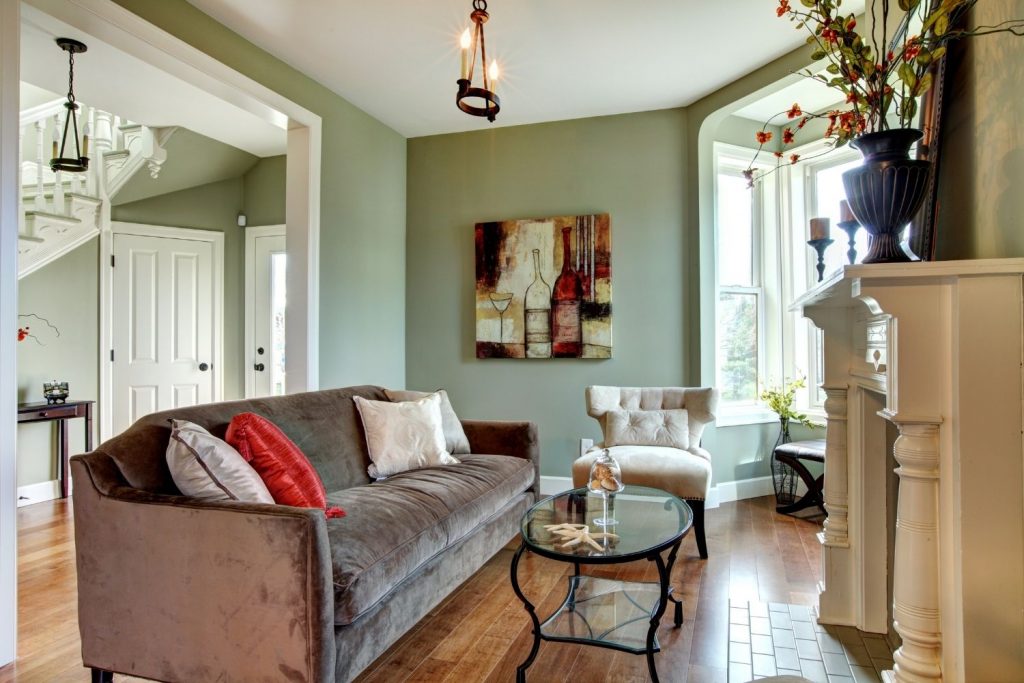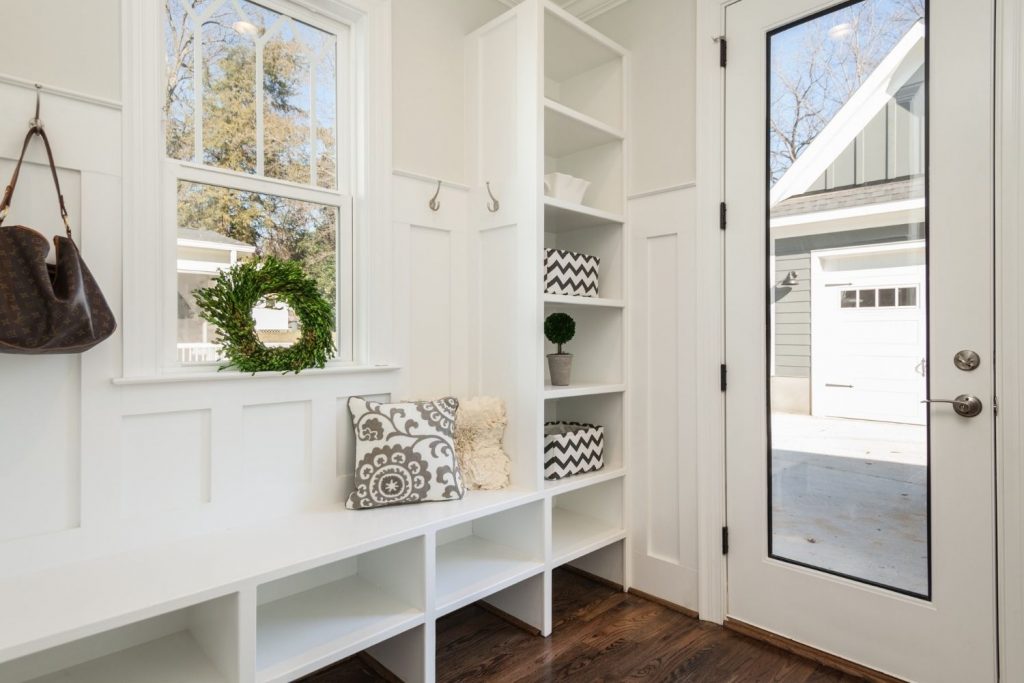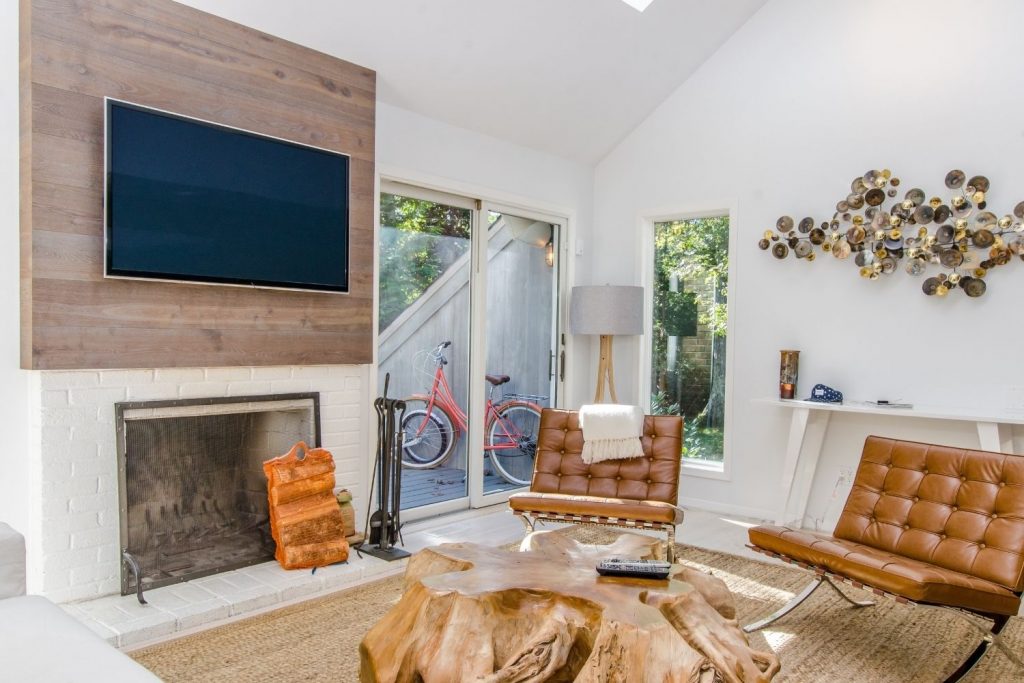When it comes to decorating the home, we don’t always think about how colors affect the way we feel. Oftentimes, we’re so preoccupied with the way colors look that we forget to consider the impact of color psychology in Interior Design.
Yet, it’s incredibly important to carefully consider the colors we choose to surround ourselves with.
This article is going to explain the importance of color in Interior Design and why it’s important to have a basic understanding of color theory when choosing paint colors for your home.
Of course, we’ll go over the psychology of each color in detail, and then we’ll put it all together so that you can choose a color scheme for your home.

This post may contain affiliate links and we may earn commissions when you click on the links at no additional cost to you. See our disclosure policy for more details.
Importance of Color in Interior Design
What IS the power of color in Interior Design, anyway? Basically, it all boils down to this: The colors that surround you can have a significant impact on your mood.
This about this for a minute…
Color psychology plays an important role in advertising and marketing for many of the brands we know and love — and it also plays a role in the design of their interiors, whether that’s a popular chain restaurant or a retail store. They carefully choose colors that will get you to spend more money at their establishments.
So it stands to reason that we could expect the colors in our personal spaces to affect us in some way or another. (And I can attest that it does, both from personal experience and as a paint color expert!)
What is Color Psychology in Interior Design?
We see color based on how light reflects off of a surface. The rainbow represents the spectrum of hues that the human eye can see: red, orange, yellow, green, blue, indigo, and violet.
Wikipedia describes color psychology as “the study of hues as a determinant of human behavior.” Believe it or not, it dates back to the ancient Egyptians, who studied the effects of color on mood and used them for holistic benefits.
They believed that red increases circulation, orange energizes, and blue soothes pain. In modern days, color psychology is used in not only Interior Design, but also in architectural design and marketing.
Color evokes feeling and incites emotion. The paint colors you choose, along with the color of your furniture and accessories, all work together to create a mood.
I’m going to give a brief overview of why color theory is important in Interior Design, and then we’ll get into the nitty gritty of the feelings and emotions as they relate to specific colors.
Importance of Color Theory in Interior Design
When deciding on a color scheme, it’s not only important to understand color psychology in Interior Design, but it’s also helpful to have an understanding of which hues go together.
That’s where the color wheel comes in. There are six main types of color schemes that are based on where the hues reside on the color wheel:
- Monochromatic
- Complementary
- Analogous
- Triad
- Split-complementary
- Tetradic
You can read more about color theory in this article about how to choose a color palette for any room in your home.
Color Psychology in Interior Design: How Paint Colors Affect Mood
And now for the nitty gritty. The psychology of color in Interior Design.
Here’s an overview of each color and how it affects our mood.
Red

Red is a powerful color that can be either bold and dramatic, full of passion and drama, or cozy, warm, and earthy, depending on the shade.
A bright crimson, for example, can create drama in a room, while rusty shades are cozier.
Red is a warm hue that is best used in rooms where you want to create a lot of energy, since it is known to increase heart rate and appetite. Kitchens (and front doors) are great places for red paint.
It’s a great choice for a room where you want to stimulate conversation.
On the other hand, it can evoke restlessness, and even gets the reflexes ready to act, so keep these things in mind when decorating with red.
Pink

Pink is a tint of red, meaning it is a blend of red and white. While pink used to be considered a masculine hue, it is now seen as being feminine. It’s typically associated with love and romance.
Muted pinks can help to soften a room, and are believed to have a calming effect, while darker shades add drama. To avoid an overly sappy, sweet look, keep the room’s lines clean and simple, and choose sophisticated fabrics.
Orange

Orange is a warm color that is often seen as bright, fun, and energetic. Like red, it can increase the heart rate and appetite (and is thus a popular choice among restaurant decor), although not as much as red.
This is a color that everyone seems to either love or hate.
When used in large quantities, bright orange can feel overwhelming, but it adds a nice pop of color when used as an accent. On the other hand, softer shades of orange, such as peach and terracotta, can create a cozy and calming atmosphere.
Gold, a distant variation of orange, gives a look of prestige. Gold is often associated with illumination, wisdom, and wealth.
Orange pairs well with cooler colors, such as blue.
Yellow

Yellow is another warm color, and it’s often associated with sunshine, energy, and happiness. Bright yellow can evoke optimistic feelings (when used sparingly).
It can also help to spark creativity, although when overdone, it can cause anxiety and stress. It is a stimulating color and can cause feelings of nervousness. People are more likely to lose their temper in an all yellow room.
This is why it’s best to avoid decorating a home office or children’s bedrooms/playrooms with yellow as the main color. It does work well in kitchens, though, as well as dining rooms, bathrooms, and home gyms.
Green

A cool color, green is the color of nature and harmony. Lighter and muted greens are soothing and relaxing, and are considered the most restful for the eye.
It’s also associated with fertility, which may be one of the reasons it’s so popular in bedrooms, although it works well for virtually any room in the house.
Olive green is often seen as the color of peace.
Also the color of money, green is thought to stimulate focus and creativity, particularly lighter hues. Deeper greens can create an elegant feel in a room, although it’s sometimes associated with ambition, greed, and jealousy, as well.
Blue

Blue is another cool color, and is often used to create a spa-like atmosphere — particularly in bathrooms. Light blue is a calming color.
It can bring down blood pressure and slow the heart rate. Pastel blue can create tranquility, and it is associated with health and healing. But if a wall gets very little natural light, it can feel a little too chilly.
Blue slows the metabolism, and because it is believed to suppress the appetite, it’s not a popular choice for dining rooms — especially lighter blues.
While lighter tints of blue are used to evoke serenity, navy is a more masculine choice, and can create an elegant or luxurious feel in any room, especially in the bedroom.
You might also enjoy: 5 Stunning Ideas for Pairing Blue Walls and White Trim in Your Home
Purple

Purple is also a cool color — the color of royalty and creativity. It’s dramatic and sophisticated, and can give a mysterious vibe.
Darker hues, such as plum and violet, are bold and exotic, while tints of purple (such as lavender) are calming and give the room a restful ambiance.
It may or may not come as a surprise to you, but purple is a popular choice for kids’ rooms. About 75 percent of pre-adolescent children choose purple as the main color in their bedrooms.
White

White is the color of purity and cleanliness. It’s often associated with a “blank slate” and, when done well, it can provide a neutral background in any room.
With the recent rise in popularity of Scandinavian design, more homeowners and Interior Designers are learning toward white-on-white in their home decor.
Depending on how it’s used in the home, it can either feel fresh and modern or cold and barren. A white home interior needs to have well-thought-out accent pieces in order to avoid a barren feel.
Black

Dark and dramatic, black is seen as the color of sophistication, elegance, and luxury. Black accents are timeless and chic.
But when used in large quantities, a room can end up feeling dark and gloomy, so black is typically best used in small doses.
If you choose to use it as a wall color, consider the size of the room and whether it’s well-lit or not — create contrast with lighter colored furnishings, or simply use it on an accent wall.
Brown

Brown is a versatile, neutral hue. It can really warm up a space when done correctly. Lighter browns, such as caramel, can evoke feelings of happiness.
However, if too much brown is used, it can cause moodiness.
Implementing What You’ve Learned
Now that you have an understanding of how the colors that surround us can affect our mood, it’s time to put what you know into action.
When choosing a color scheme for your home, or even for a single room, consider the feelings you want to incite when you’re in that room.
Do you want to feel relaxed? Energized? Do you need to be able to focus?
Think about the colors that evoke these feelings, but keep in mind that everything you read above is a general overview. It doesn’t take into consideration the feelings that you, personally, feel when they’re surrounding you.
At the end of the day, it’s all about what feels good to you.
Soooo… How are you going to implement what you’ve learned about color psychology in Interior Design?

Read more:
Top 10 Bedroom Colors (& the Moods They Evoke)


Thank you so much.. This has been super helpful for an upcoming interior designer like me.